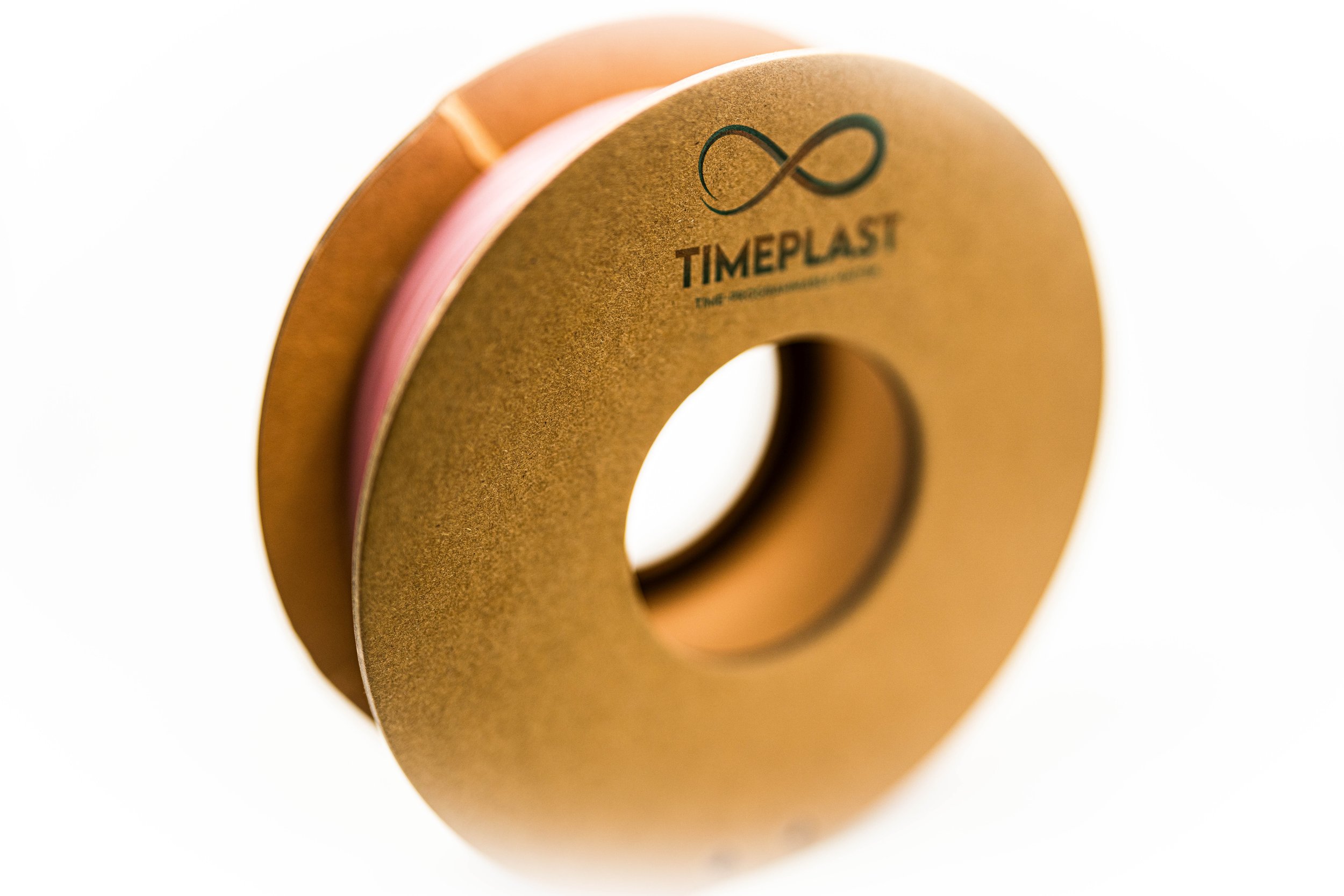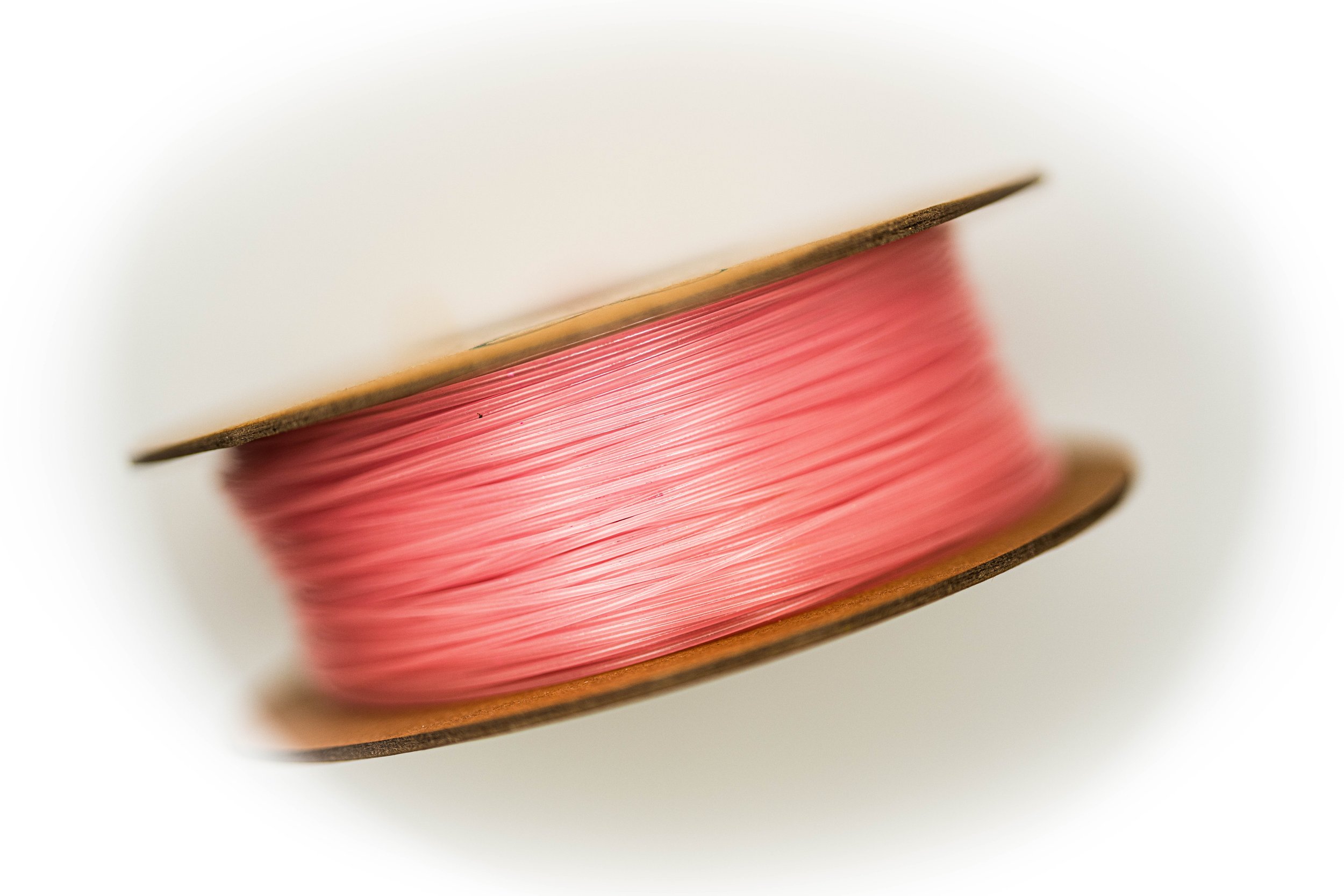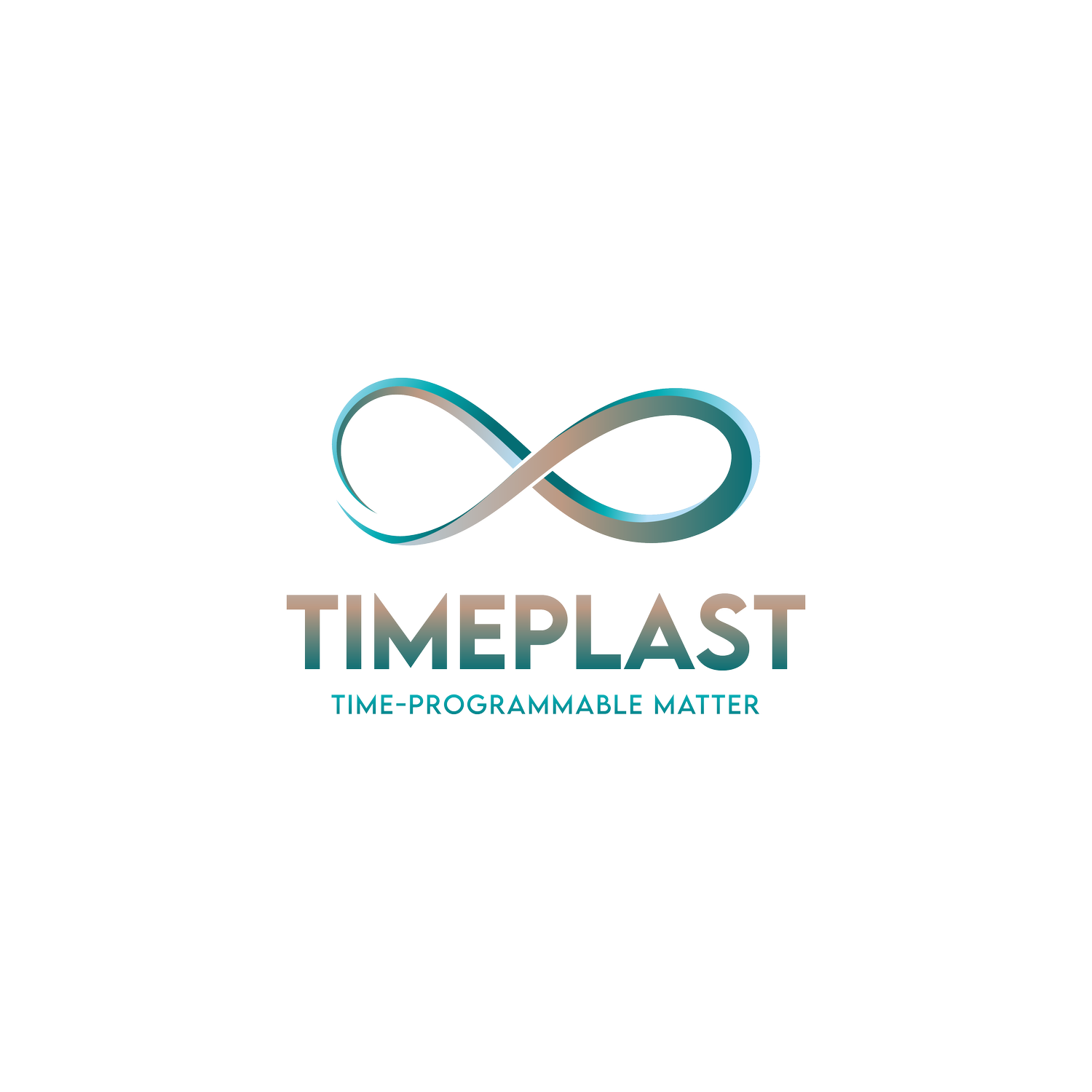

Ball
What if 3D-printed objects could bounce, stretch, and absorb impact like real rubber—without the weaknesses of traditional elastomers? TimeMass - Ball is a next-generation ultra-flexible, high-molecular-weight polymer filament, engineered to replicate the mechanical properties of rubber with superior resilience, printability, and long-term durability.
Unlike conventional rubber-like 3D printing filaments, which often suffer from poor elasticity recovery and weak layer adhesion, TimeMass - Ball leverages a specialized polymer structure with long-chain entanglements and high molecular cohesion. This unique formulation ensures exceptional bounce, impact absorption, and mechanical endurance—delivering true rubber-like performance with the reliability of advanced polymers.
Designed for Maximum Elasticity & Energy Efficiency
🔄 Unrivaled Strain Recovery – Maintains high elasticity and rebounds efficiently, ensuring minimal permanent deformation even after repeated compression.
⚡ Energy-Efficient Bounce – Engineered for dynamic response, allowing objects to store and release energy efficiently, mimicking the behavior of real rubber.
🔗 Superior Layer Adhesion & Tear Resistance – Unlike other flexible filaments that delaminate or tear easily, TimeMass - Ball retains strong interlayer bonding, making it perfect for high-impact applications.
Where Performance Meets Practicality
🏀 Sporting Goods & High-Impact Prototypes – Print high-rebound balls, protective padding, and shock-absorbing components with unparalleled flexibility.
🚗 Automotive & Robotics Applications – Develop durable vibration dampeners, soft grippers, or suspension elements that can withstand repeated stress.
🎭 Toys, Games & Interactive Designs – Create durable, bouncy objects such as stress balls, fidget toys, or play equipment that can endure constant use.
💡 Wearable & Medical Innovations – Design pressure-distributing insoles, orthopedic supports, or flexible exoskeletons that adapt to movement without breaking down.
🔬 Soft Robotics & Experimental Engineering – Use TimeMass - Ball to build responsive actuators, inflatable chambers, or shock-resistant casings for cutting-edge research.
Revolutionizing Rubber-Like 3D Printing
By eliminating the weaknesses of standard elastomers, TimeMass - Ball enables new possibilities in sports, engineering, robotics, and beyond. Its ability to stretch, compress, and rebound dynamically makes it a game-changer for high-performance, flexible applications.
For those who demand precision, durability, and true rubber-like performance, TimeMass - Ball is the next evolution in flexible 3D printing.
Need Ideas? Here You Go:
Fully functional, airless sports balls, like basketballs and soccer balls, without the need for inflation.
Impact-resistant pads and bumpers for robotics, industrial machinery, or automotive components.
Vibration-dampening parts for mechanical or soundproofing applications.
Stress-relief and therapeutic squeeze balls for medical and wellness use.
Flexible grips, handles, and soft-touch surfacesfor ergonomic tools.
Advanced robotic actuators that require soft material interactions.
Free U.S. Standard Shipping on orders of 5+ spools.
Custom colors & nutrient ratios for 5+ same-type spools’ orders
Made in the USA.
What if 3D-printed objects could bounce, stretch, and absorb impact like real rubber—without the weaknesses of traditional elastomers? TimeMass - Ball is a next-generation ultra-flexible, high-molecular-weight polymer filament, engineered to replicate the mechanical properties of rubber with superior resilience, printability, and long-term durability.
Unlike conventional rubber-like 3D printing filaments, which often suffer from poor elasticity recovery and weak layer adhesion, TimeMass - Ball leverages a specialized polymer structure with long-chain entanglements and high molecular cohesion. This unique formulation ensures exceptional bounce, impact absorption, and mechanical endurance—delivering true rubber-like performance with the reliability of advanced polymers.
Designed for Maximum Elasticity & Energy Efficiency
🔄 Unrivaled Strain Recovery – Maintains high elasticity and rebounds efficiently, ensuring minimal permanent deformation even after repeated compression.
⚡ Energy-Efficient Bounce – Engineered for dynamic response, allowing objects to store and release energy efficiently, mimicking the behavior of real rubber.
🔗 Superior Layer Adhesion & Tear Resistance – Unlike other flexible filaments that delaminate or tear easily, TimeMass - Ball retains strong interlayer bonding, making it perfect for high-impact applications.
Where Performance Meets Practicality
🏀 Sporting Goods & High-Impact Prototypes – Print high-rebound balls, protective padding, and shock-absorbing components with unparalleled flexibility.
🚗 Automotive & Robotics Applications – Develop durable vibration dampeners, soft grippers, or suspension elements that can withstand repeated stress.
🎭 Toys, Games & Interactive Designs – Create durable, bouncy objects such as stress balls, fidget toys, or play equipment that can endure constant use.
💡 Wearable & Medical Innovations – Design pressure-distributing insoles, orthopedic supports, or flexible exoskeletons that adapt to movement without breaking down.
🔬 Soft Robotics & Experimental Engineering – Use TimeMass - Ball to build responsive actuators, inflatable chambers, or shock-resistant casings for cutting-edge research.
Revolutionizing Rubber-Like 3D Printing
By eliminating the weaknesses of standard elastomers, TimeMass - Ball enables new possibilities in sports, engineering, robotics, and beyond. Its ability to stretch, compress, and rebound dynamically makes it a game-changer for high-performance, flexible applications.
For those who demand precision, durability, and true rubber-like performance, TimeMass - Ball is the next evolution in flexible 3D printing.
Need Ideas? Here You Go:
Fully functional, airless sports balls, like basketballs and soccer balls, without the need for inflation.
Impact-resistant pads and bumpers for robotics, industrial machinery, or automotive components.
Vibration-dampening parts for mechanical or soundproofing applications.
Stress-relief and therapeutic squeeze balls for medical and wellness use.
Flexible grips, handles, and soft-touch surfacesfor ergonomic tools.
Advanced robotic actuators that require soft material interactions.
Free U.S. Standard Shipping on orders of 5+ spools.
Custom colors & nutrient ratios for 5+ same-type spools’ orders
Made in the USA.
-
1. Introduction
These parameters are designed to help avoid printing issues; however, temperatures and speed timings can be adjusted based on your specific goals. For example, if you prefer a less rigid result, we recommend using a lower temperature. This section outlines a complete slicing and printing profile for TimeMass Ball, tailored for printers with a 0.8 mm nozzle. If the print is not being successful, please lower the nozzle temperature by 10°C and start over until an optimal print is achieved. While these examples were printed with a 0.8 mm nozzle, TimeMass can be used with any nozzle size. Please check the manual for printing parameters with all the other nozzle sizes.2. Temperature Settings
2.aNozzle Temperature: 240°C — Optimal for flowability while avoiding decomposition (which begins around 250°C).
2.bBed Temperature: 95°C — Ensures strong first-layer adhesion and prevents moisture bubbling.
2.cNozzle Temperature Range: 230–245°C — Timeplast melts around 165°C but prints best at 240°C for precise viscosity control.3. Cooling Settings
3.aNo Cooling for First Layers: 3 layers — Prevents shrinkage due to rapid cooling of moisture-rich filament.
3.bFan Minimum Speed: 0% for the first 100 seconds — Allows heat retention during early layers.
3.cFan Maximum Speed: 15% starting at 8 seconds — Avoids overcooling that can lead to warping.
3.dKeep Fan Always On: OFF — Allows vapor to escape and avoids internal fogging.
3.eSlow Down for Cooling: ON — Improves surface finish with controlled cooling.
3.fForce Cooling for Overhangs: OFF — Overcooling can deform bridges in Timeplast.
3.gFan for Overhangs: 15% — Only for essential cooling in complex areas.
3.hPre-Start Fan Time: 2 seconds — Minimizes pressure differential during the first layer.4. Volumetric Flow
4.aMax Volumetric Speed: 12 mm³/s — Based on a melt flow index of ~15 g/10min, allows high-speed printing.
4.bRamming Speed: 3 mm³/s — Prevents bubbles or popping from pressure spikes.5. Retraction and Flow
5.aRetraction Distance: 0.4 mm — Minimal retraction required for soft filaments to avoid stringing.
5.bRetraction Speed: 15 mm/s — Slow enough to avoid pulling molten plastic.
5.cPressure Advance: 0.05 — Compensates for nozzle lag at high flow rates.
5.dFlow Ratio: 92% — Slight under-extrusion avoids swelling and surface artifacts.6. Precision Settings
6.aGap Closing Radius: 0.1 mm — Tolerant of gaps in thicker walls.
6.bArc Fitting: ON — Reduces G-code size and smooths curve transitions.
6.cElephant Foot Compensation: 0.1 mm — Offsets squishing in the first layer caused by large bead sizes.7. Walls and Shells
7.aWall Loops: 2 — Minimum for strength when using a 0.8 mm nozzle.
7.bDetect Thin Walls: ON — Ensures tight geometries aren’t skipped.
7.cTop/Bottom Shell Layers: 3 — Provides good coverage; increase if watertightness is needed.
7.dTop/Bottom Thickness: 1.2 mm — Equals 1.5x the nozzle size for solid strength.
7.eTop/Bottom Pattern: Monotonic — Distributes tension evenly and improves surface finish.8. Geometry and Movement
8.aWall Order: Inner before Outer — Creates cleaner outer surfaces.
8.bInfill First: OFF — Maintains precise outer dimensions.
8.cSmooth Speed Transition: ON — Prevents ringing caused by abrupt speed changes.
8.dSmooth Coefficient: 80 — Ideal damping for soft materials.
8.eAvoid Crossing Wall: ON — Minimizes stringing across part walls.
8.fMax Detour for Crossing: 10 mm or 5% — Balances time with print cleanliness.9. Layer and Width Settings
9.aLayer Height: 0.3 mm — Optimal for strength and resolution using a 0.8 mm nozzle.
9.bInitial Layer Height: 0.35 mm — Slightly higher to improve adhesion.
9.cLine Widths (all): 0.8 mm — Matches nozzle diameter for consistent extrusion.10. Seam Settings
10.aSeam Position: Aligned or Back — Use aligned for mechanical consistency, back for visual appeal.
10.bSmart Scarf Seam: ON — Automatically adjusts seam location to reduce visual impact.
10.cSeam Angle: 155° — Standard seam angle for clean transitions.
10.dSeam Steps: 10 — Smooths seam path and improves visual finish.11. Infill Settings
11.aWall/Infill Overlap: 10% — Prevents infill from deforming soft exterior walls.
11.bInfill Combination: ON — Consolidates paths for efficiency.
11.cDetect Floating Shells: ON — Ensures unsupported vertical structures are printed reliably.
11.dSparse Infill Density: 20–25% — Balanced rigidity vs. material use.
11.eSparse Pattern: Grid — Stable and efficient for flexible geometries.12. Speed Settings
12.aTravel: 160 mm/s — Fast but safe against backlash.
12.bInitial Layer: 15 mm/s — Prevents nozzle from skimming and ensures bed adhesion.
12.cOuter Wall: 60 mm/s — Controlled speed for surface quality.
12.dInner Wall: 90 mm/s — Slightly faster without compromising control.
12.eSmall Perimeter: 35 mm/s — Reduced speed for detailed geometry.
12.fTop Surface: 40 mm/s — Improves finish on topmost layers.
12.gInfill: 100–120 mm/s — Takes advantage of high flowability.13. Acceleration Settings
13.aNormal Print: 2000 mm/s² — Prevents ringing in soft filaments.
13.bTravel: 4000 mm/s² — Enables fast movement without harsh transitions.
13.cInitial Layer: 300 mm/s² — Gentle movement prevents lifting from the bed.
13.dOuter Wall: 1500 mm/s² — Improves outer surface clarity.
13.eInner Wall: 2000 mm/s² — Balanced for structural components.
13.fTop Surface: 1500 mm/s² — Ensures smooth detailing.14. Adhesion and Brims
14.aSkirt Loops: 2 — Helps prime nozzle and start cleanly.
14.bBrim Width: 6 mm — Helps hold soft materials down.
14.cBrim Gap: 0.15 mm — Allows for easy removal without tearing.15. Prime Tower and Flush Settings
15.aPrime Tower: ON — Purges moisture and early flow inconsistencies.
15.bTower Width: 40 mm — Prevents collapse due to heat.
15.cBrim Width (Tower): 4 mm — Adds stability to the purge base.
15.dFlush Into Support: ON — Discards unwanted early flow safely.16. G-Code Start Script
M900 K0.05 ; Pressure Advance M106 S0 ; Fan off G92 E0 G1 E15 F300 ; purge line G92 E0
17. Additional Notes
17.aDry filament at 100°C for 2 hours before use.
17.bStore with desiccant.
17.cKeep extruder door open to allow vapor to escape.
17.dAvoid long dwell times at high temperatures.If you need print settings for other nozzle sizes, feel free to reach out to us at timeplast@timeplast.com — we’ll be happy to help.
Post-processing: Print thin shells for optimal elasticity; controlled stretching can fine-tune material rebound properties.
In all honesty, with TimeMass you won’t just print objects—you’ll print experiences. Think about it. By introducing a new programmable dimension, your designs don’t just sit there. They evolve. Shift. Light up. Soap up. Grow up. Phase out. Disappear and more. You’re actually building moments.
Precision? Built In.
Making a filament with Timeplast is not easy, not at all. We can’t use automated machines for example. Each spool is handcrafted, here in the U.S. and monitored by a human for over a 49-minute cycle per spool. That’s not mass production—that’s obsessive accuracy.
Specs That Actually Matter:
Diameter: 1.75mm
Mass: 0.77lb
Compatibility: Works with all major 3D printers. No drama.
True timed obsolescence
Use filaments with built-in "time codes" like Active, Delayed or Passive to make your prints transform, separate, or self-destruct on schedule. Whether it’s art, function, or straight-up sci-fi—if you can print it, you can make it move.
Water Molecular Disintegration – Print Today, Gone Tomorrow
Yes the words “Molecular Disintegration sounded like something that ChatGPT would say, but no, it’s the only way to explain how our materials dissolve in the presence of water down to a Carbon-to-carbon level. TimeMass breaks down at the molecular level when exposed to water. That’s not marketing—it’s chemistry. Smart materials that serve their purpose, then step aside. Clean, conscious, and built for next-gen applications.
By completing your order, you consent to receive email updates related to your purchase. We may also send you promotional offers, product news, and personalised recommendations. You can opt out at any time by clicking the "unsubscribe" link in any of our emails. Your information will be handled in accordance with our [Privacy Policy].
